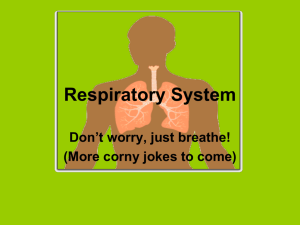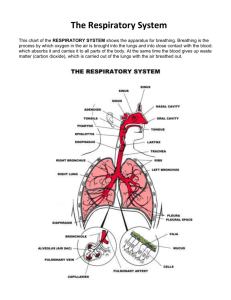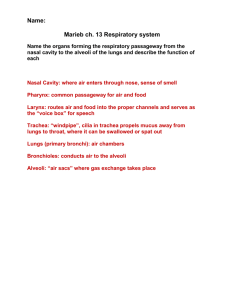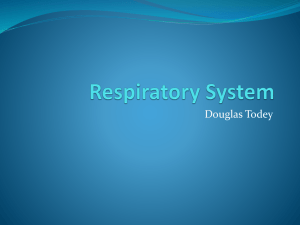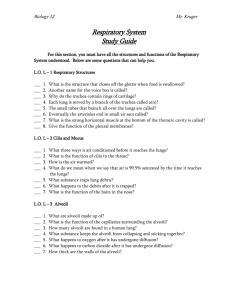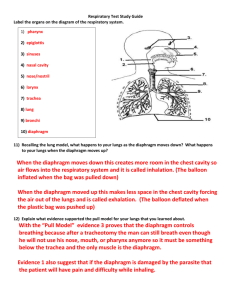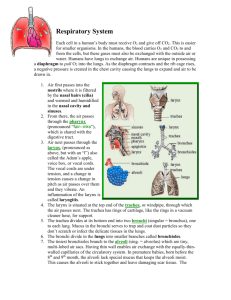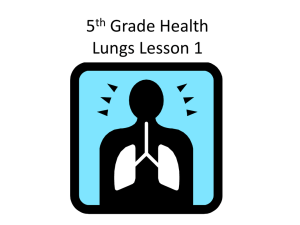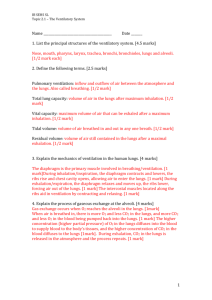23_The_Respiratory_System_files/The Respiratory System 2
advertisement
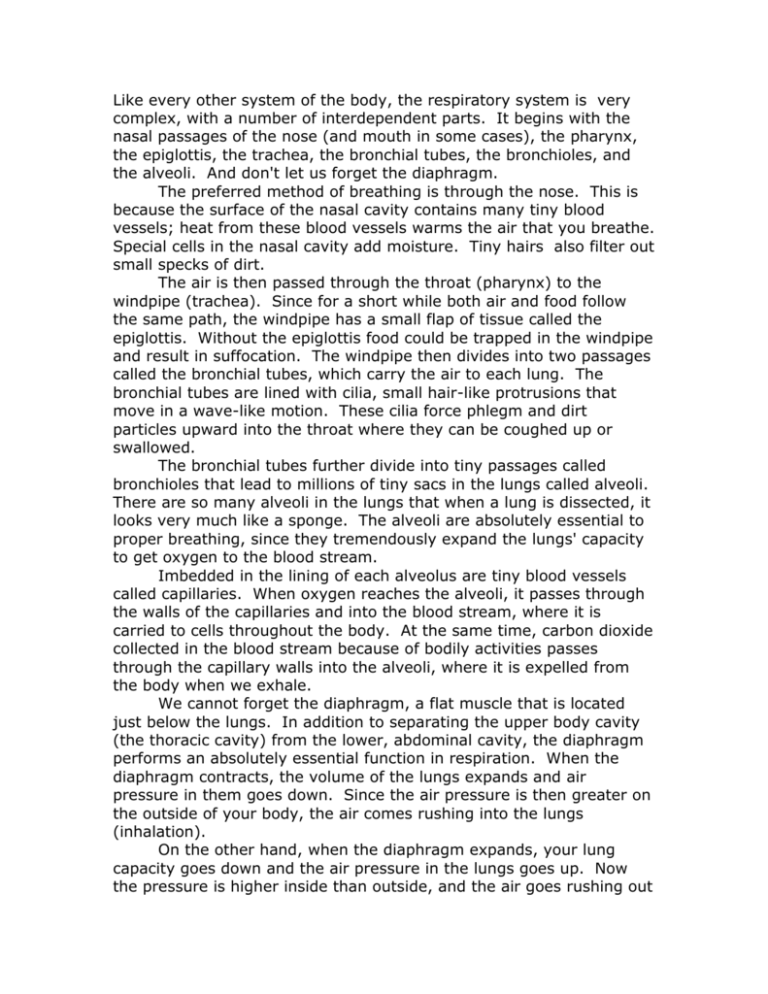
Like every other system of the body, the respiratory system is very complex, with a number of interdependent parts. It begins with the nasal passages of the nose (and mouth in some cases), the pharynx, the epiglottis, the trachea, the bronchial tubes, the bronchioles, and the alveoli. And don't let us forget the diaphragm. The preferred method of breathing is through the nose. This is because the surface of the nasal cavity contains many tiny blood vessels; heat from these blood vessels warms the air that you breathe. Special cells in the nasal cavity add moisture. Tiny hairs also filter out small specks of dirt. The air is then passed through the throat (pharynx) to the windpipe (trachea). Since for a short while both air and food follow the same path, the windpipe has a small flap of tissue called the epiglottis. Without the epiglottis food could be trapped in the windpipe and result in suffocation. The windpipe then divides into two passages called the bronchial tubes, which carry the air to each lung. The bronchial tubes are lined with cilia, small hair-like protrusions that move in a wave-like motion. These cilia force phlegm and dirt particles upward into the throat where they can be coughed up or swallowed. The bronchial tubes further divide into tiny passages called bronchioles that lead to millions of tiny sacs in the lungs called alveoli. There are so many alveoli in the lungs that when a lung is dissected, it looks very much like a sponge. The alveoli are absolutely essential to proper breathing, since they tremendously expand the lungs' capacity to get oxygen to the blood stream. Imbedded in the lining of each alveolus are tiny blood vessels called capillaries. When oxygen reaches the alveoli, it passes through the walls of the capillaries and into the blood stream, where it is carried to cells throughout the body. At the same time, carbon dioxide collected in the blood stream because of bodily activities passes through the capillary walls into the alveoli, where it is expelled from the body when we exhale. We cannot forget the diaphragm, a flat muscle that is located just below the lungs. In addition to separating the upper body cavity (the thoracic cavity) from the lower, abdominal cavity, the diaphragm performs an absolutely essential function in respiration. When the diaphragm contracts, the volume of the lungs expands and air pressure in them goes down. Since the air pressure is then greater on the outside of your body, the air comes rushing into the lungs (inhalation). On the other hand, when the diaphragm expands, your lung capacity goes down and the air pressure in the lungs goes up. Now the pressure is higher inside than outside, and the air goes rushing out (exhalation). All of this goes on without your having to think about it. It is regulated by the brain through a complicated process. Now, the question is, what could man or a supposed ancestor of man have done without while evolving the respiratory system? As was mentioned before, without the epiglottis, food would get trapped in the bronchial tubes, causing suffocation. The alveoli are also absolutely essential to allow us to breathe in enough oxygen with each breath to sustain life. And we certainly could not do without the diaphragm that enables us to inhale and exhale. Evolutionists have no explanation as to how the lungs could have gradually evolved. The lungs are yet another example of the irreducible complexity that is so ubiquitous in nature.

